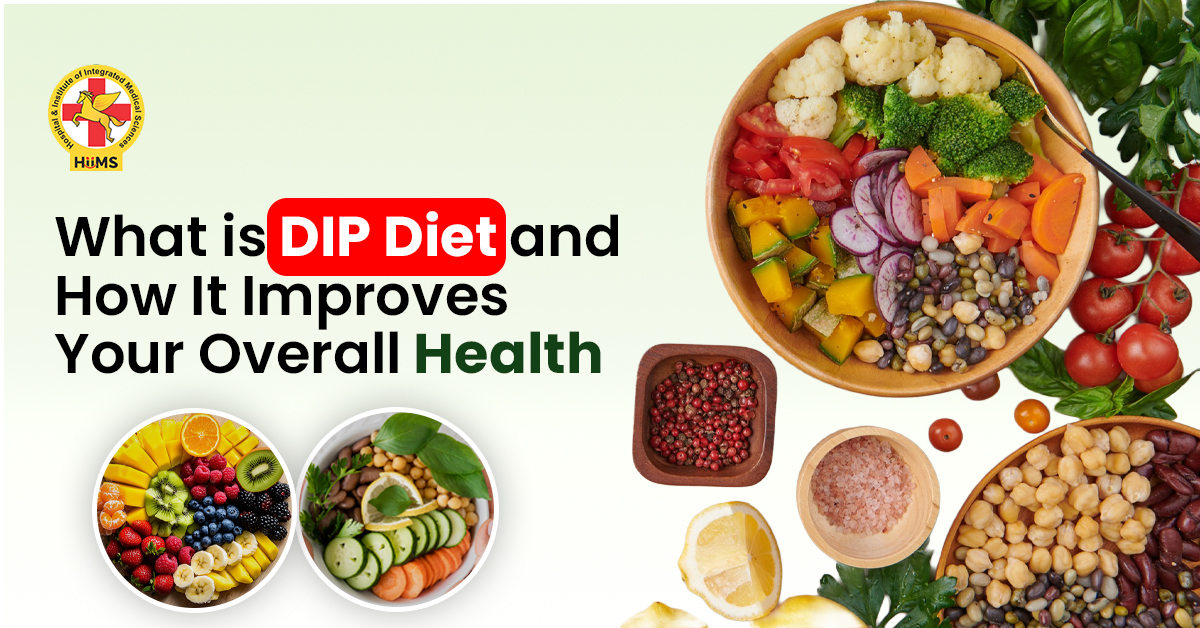In today’s busy life, food choices largely decide how healthy we feel every day. Most people eat their meals quickly, depend on packed or processed food, and rarely think about what their body truly needs. Slowly, such habits take away your energy and interfere with digestion. The DIP Diet offers a calm, thoughtful way of eating that brings you back in tune with nature.
The DIP Diet isn’t built on calorie numbers or hard rules. It’s about eating food in its natural form and giving the body what it digests with ease. Raw fruits, fresh vegetables, and homely meals together help the body stay clean and lively.
In this blog, we’ll understand what the DIP Diet really means, why it matters in today’s world, its basic principles, its daily food routine, and the real benefits of the DIP diet for a healthy lifestyle.
What is the DIP Diet?
The full name of the DIP Diet is the Disciplined and Intelligent Person’s Diet. It was developed to guide people toward smart food habits and natural living. The idea draws inspiration from Ayurveda and global nutrition studies like The China Study (A book), which highlight the importance of plant-based food for long-term wellness.
This diet follows a simple concept that, when we eat natural food that is fresh, seasonal, and easy to digest, our body feels lighter and more balanced. It mainly includes fruits, raw vegetables, nuts, and home-cooked meals prepared with minimal oil and spices. It is not just a food routine; it is a lifestyle that connects the body, mind, and daily choices with simplicity and discipline.
Why the DIP Diet is Significant Today
With the rise of fast food, irregular eating, and less physical activity, many people experience low energy, poor digestion, and other lifestyle-related issues. Modern life has made eating more about convenience than quality.
The DIP Diet brings back balance by making food natural again. It teaches us to eat what grows around us and respect the timing of meals. By starting with raw fruits and vegetables, the body gets live enzymes that help it function smoothly. The diet’s simple pattern can be followed by anyone, whether they are working professionals, students, or elders.
Sample Daily Routine for the DIP Diet
Breakfast (7:00am-9:00am)
- Plate 1 – Body Weight x 10 gm Seasonal Fruits 3-5 types
• Plate 2 – Any Normal Home Meal OR Millet Recipes – Poha, Daliya, Upma, etc.
Lunch (1:00pm-2:00pm)
- Plate-1 Body Weight x 5 gm Seasonal Vegetable Salad 3-5 types
• Plate-2 Any Normal Home Meal Or Millet Recipes – Khichadi, Chapati, Dhokla, Daliya
Dinner (Before Sunset)
(Without Dinner)
• Plate-1 Body Weight x 10 gm Seasonal Fruits & Vegetable Salad 3-5 types
(With Dinner)
• Plate-1 Body Weight x 5 gm Seasonal fruits & Vegetable Salad 3-5 types
• Plate-2 (Homemade Vegetable Soup)
Note: There should be no gap between Plate 1 & Plate 2. Start eating Plate 2 instantly after eating Plate 1.
For snacks, one can enjoy soaked nuts, coconut water, or sprouts. At Jeena Sikho HiiMS Lucknow, people are guided to pick locally available seasonal produce, which keeps this diet affordable and easy to follow.
Core Principles of the DIP Diet
Principle 1: Eat Raw Fruits or Vegetables First
Always begin meals with a plate of raw fruits or salads. This helps digestion and prepares the body to absorb nutrients better.
Principle 2: The Two-Plate Rule
Plate 1 should have raw or plant-based food like fruits and salads. Plate 2 can have home-cooked items such as khichdi, dal, chapati, or vegetable soup.
Principle 3: Avoid Processed Foods
Refined sugar, animal products, heavy oils, and packaged snacks should be limited or restricted.
Principle 4: Portion and Timing
Follow the “body weight × grams” calculation for raw food portions and eat meals on time: breakfast, lunch, and dinner before sunset.
Principle 5: Lifestyle Support
Spend some time in sunlight, stay physically active, and eat with full attention. This completes the idea of the DIP diet for a healthy lifestyle.
Benefits of the DIP Diet for Overall Health
Following the DIP Diet regularly brings steady improvements in energy and daily comfort. The high fibre and natural enzymes in raw food help in better digestion. Simple meals lessen heaviness and make the body feel more active.
One of the important benefits of a DIP diet is its focus on balance. It helps the body maintain good internal coordination through food that is fresh and plant-based. Regular intake of natural meals can improve skin texture, keep the system clean, and bring a sense of lightness.
The DIP Diet also supports a DIP diet for a healthy lifestyle by encouraging habits that are sustainable for years. It doesn’t depend on special products or strict rules, just mindful eating and natural choices.
Challenges and Practical Tips to Stay On Track
Every new habit needs patience. It’s normal to crave old foods or find it hard to switch completely. Start small; begin one meal with raw food if you are not able to change it completely, then slowly build the habit. Keep seasonal fruits and vegetables ready at home to avoid last-minute choices.
Planning ahead and eating mindfully are at the heart of the DIP Diet. Remember, the goal isn’t perfection but discipline and intelligent choices. Step by step, it turns into a lasting routine.
Conclusion
The DIP Diet is a simple and thoughtful way to live closer to nature. By choosing plant-based, raw, and home-cooked meals, one can experience better digestion, balance, and comfort in everyday life. This approach helps build a long-lasting connection between food and health.
At Jeena Sikho HiiMS Lucknow, you can learn how to include this diet into your lifestyle naturally. To know more about following the DIP Diet and improving your daily routine, contact Jeena Sikho HiiMS Lucknow at +91 82704-82704 or email care@jeenasikho.com.
FAQs
1. What is the DIP Diet?
It is a simple eating pattern where natural, plant-based foods like fruits and salads are eaten before cooked meals in a Plate 1 & Plate 2 concept.
2. How does the DIP Diet help in daily life?
It brings regularity, better digestion, and supports a balanced routine for a DIP diet for a healthy lifestyle.
3. What are the main foods in the DIP Diet?
Fresh fruits, raw vegetables, nuts, seeds, and home-cooked meals form the base of the DIP Diet.
4. Can anyone follow the DIP Diet?
Anyone can adapt it using local and seasonal food choices suited to their body and routine.
5. What are the key benefits of a DIP Diet?
It supports cleaner eating habits, steadier energy, and overall wellness through natural food balance.


